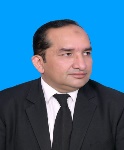
Tiansen Liu
Harbin Engineering University, P R China
Title: How internationalizaiton moderates the relationship between corporate governance and sustainable operations of manufacturing firms in China
Submitted Date: 12 August, 2019
Biography
Tiansen Liu is a lecturer whose research interests are energy economics, environmental governance, and firm’s green operations. He has publishedrnmore than 30 related papers. In these studies, he explained how Chinese government should establish the unified carbon market and coordinaternthe allocation of carbon quota, how manufacturing firms should more proactively develop environmental management, and how to integraternenvironmental production factors within specific regions. He broadly uses mathematical and econometric models as well as develops new modelsrnto measure the risk of carbon price and the effectiveness of carbon policy in China. He also serves as the reviewer for some international journals in the field of environmental science. In the following stage, he will more focus on the green operations of manufacturing firms.
Abstract
Linking governance structure and sustainability has been a key research issue in mainstream literatures onrncorporate governance and operations management. This paper contributes to our understanding of whetherrncorporate internationalization level can improve the impact of their governance structure on sustainablernoperations in the broad context that internationalization strategies may lead to more climate-friendly actions.rnChinese manufacturing firms are analyzed because of their significant impact on global climate change andrntheir distinctive governance structure. Specifically, we examine effects of corporate governance structure fromrnperspectives of major shareholders’ decision-making authority (ownership concentration), intensity of internalrnsupervision (size of independent directors), and state-holding (proportion of state-owned shares) through 2775rnfirm-year observations. Integrating the OLS regression, Fixed Effect test, and Random Effect test, the change ofrnsustainable operations can be robustly explained by a series of explanatory variables. Our findings suggest that therninternationalization level of Chinese manufacturers is still low. Stronger state-holding can significantly improvernsustainable operations, and internationalization level can motivate major shareholders to focus more on sustainablernoperations. Further, a higher level of internationalization, when it exceeds the sample average, can also significantlyrnmotivate major shareholders to focus on sustainable operations, but a lower level of internationalization hasrnnot motivated any indicator related to governance structure to produce positive effects. Additionally, the sizernof independent directors has not been able to improve sustainable operations. These empirical results enlightenrnthat indicators related to board of directors’ decision-making usually more directly affect internal sustainable behaviors, which indicates that manufacturers with a centralized governance structure are more likely to develop sustainable operations in China. Moreover, international expansion provides an attemptable path that helps link corporate governance and sustainable operations.

Khairia M Al-Qahtani
Princess Nourah Bint Abdulrahman University, Saudi Arabia
Title: Water quality indices as an important tool for water quality assessment in industrial areas of Riyadh city, Saudi Arabia
Submitted Date: 5 January, 2020
Biography
Khairia M Al-Qahtani is a supervisor for the Chair of Environmental Pollution Research at the university of Princess Nourah Bint Abdulrahman. He has published up to 30 environmental research papers. He has experienced in the field of environmental research and evaluation of industrial areas in the Kingdom of Saudi Arabia and their impact on health. He has more than 25 years of teaching and administration experience specialising in inorganic chemistry.
Abstract
The Riyadh City-Saudi Arabia has undergone rapid development in population, urbanization and industrialization that has posed great pressure on the water quality and ecological environment. The present work was conducted to evaluate the physico-chemical parameters as well as level of nine selected heavy metals in streams affected by discharges from two different industrial locations and one from treated sewage area, Riyadh City. The results revealed a fluctuating behavior of selected parameters throughout the study locations influenced by different discharging sources. Based on the concentration ranges and abundance, heavy metals are ranked in order of magnitude as Zn > Cu > Pb > Cr > Ni > As > Cd > Hg > Co. The increased level of heavy metals concentrations was recorded in water samples collected from discharged industrial effluents into L1 (2nd industrial area) and L2 (3rd industrial area). For all samples, Pearson’s correlation matrices among the studied heavy metals and environmental parameters revealed a highly significant positive correlation (r > 0.86, p < 0.05) that suggesting a common source of these metals. Metal partition coefficient (kd), recorded a high value for Cd, Co, Pb, Cr and As that indicated a significant binding between those metals and the particles in suspension especially for L1 and L2. The mean heavy metal pollution indexes (HPI) of different locations are found far above the critical threshold value of 100 due to anthropogenic origin that includes industrial activities. The Metal Index (MI) was found to fall in range between seriously (L1) and strong (L2) affected areas to pure (L3) area. Studies of health risk assessment indicated that 80 persons out of 200 suffered from sinusitis followed by 70 suffered from nearsightedness, 50 from throat ashes, skin irritation, general fatigue and depression.

